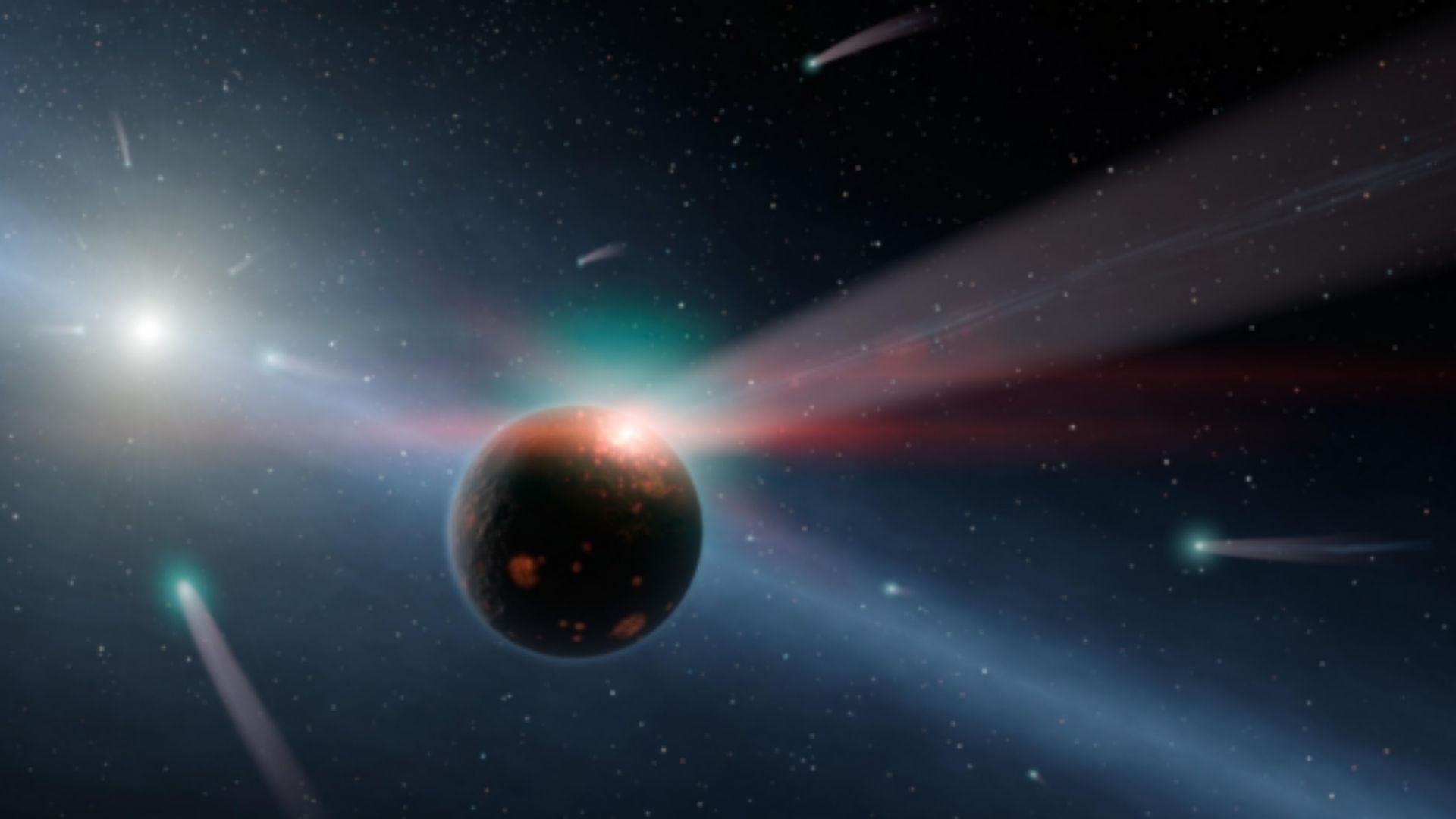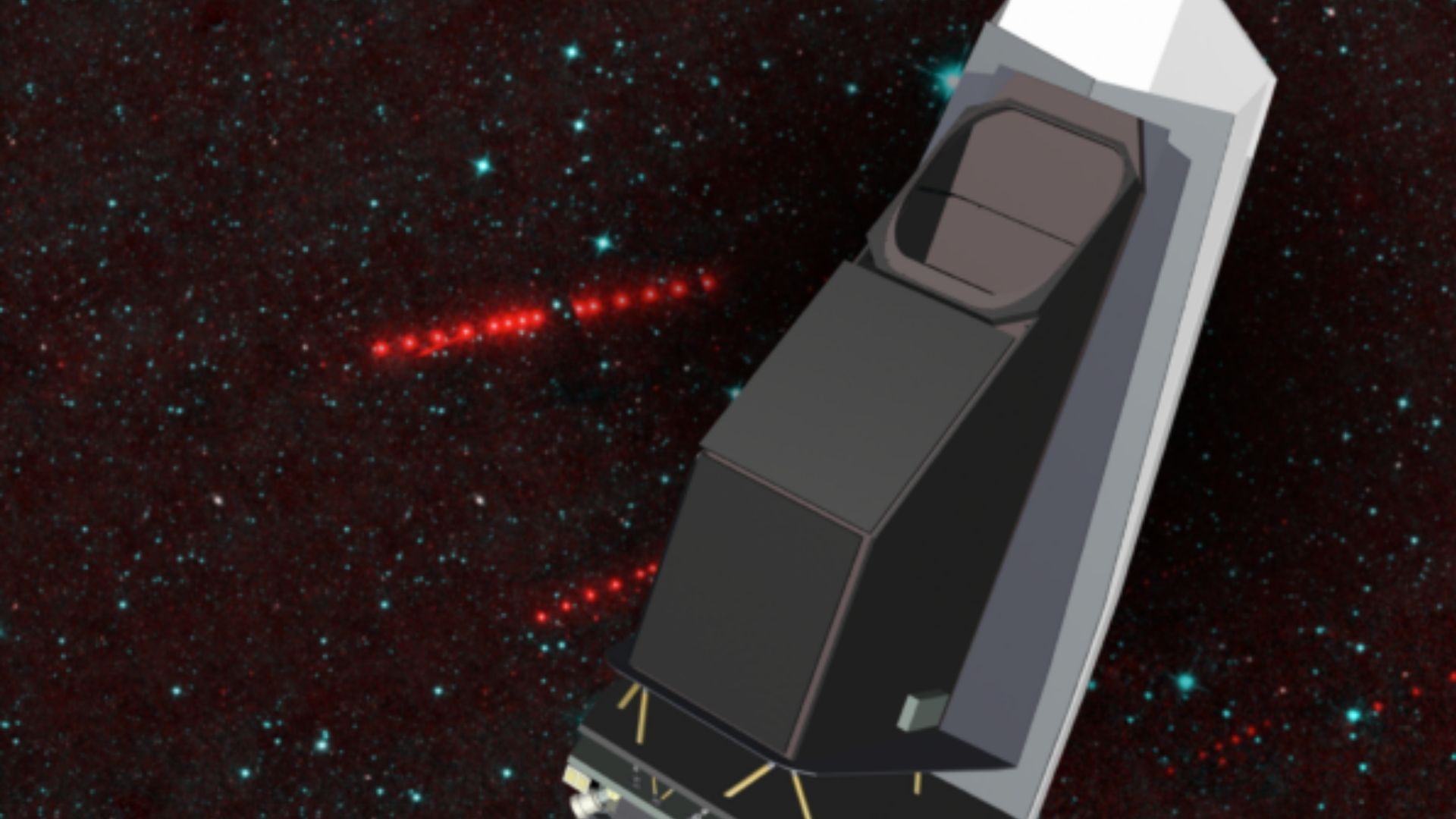
CU Boulder students and staff will fulfill a crucial role in an upcoming NASA mission designed to find and characterize asteroids and comets that could pose a threat to our planet. NASA’s Jet Propulsion Laboratory in Southern California has selected the Laboratory for Atmospheric and Space Physics (LASP) to lead the operations for NEO Surveyor, a space-based telescope that will use infrared bands to detect, track, and characterize Near Earth Objects (NEOs)—asteroids and comets that come within 48 million kilometers (30 million miles) of Earth’s orbit.
Scheduled to launch in 2026, the mission will help fulfill a Congressional mandate to catalog more than 90 percent of all NEOs larger than 140 meters (460 feet) across. These objects are large enough to cause substantial regional damage should one impact Earth.
“We estimate that there could be 25,000 near-Earth objects that are large enough to cause severe damage to an area the size of New York State,” says Amy Mainzer, a professor of planetary science at the University of Arizona and the mission’s principal investigator. “NEO Surveyor’s objective is to find these potentially hazardous asteroids and comets, track them long enough to determine their orbits, and measure their sizes.”
To accomplish this, NASA will launch a telescope nearly 50 centimeters (20 inches) in diameter and 6 meters (20 feet) long. It will operate in two infrared wavelengths to detect the heat emitted by NEOs as they’re warmed by the Sun while approaching Earth. This technology will allow NASA to find light- as well as dark-colored asteroids, which are notoriously difficult to detect.
“LASP’s Mission Operations Center will serve as the vital connection between this state-of-the-art telescope and NEO Surveyor’s partners throughout its five years of operation,” says Jerry Jason, director of LASP’s Mission Operations and Data Systems Division. “We’re honored to play a role in a mission with such an important goal: keeping our planet safe from potentially disastrous asteroid and comet impacts.”
LASP is one of only a few university-based mission operation centers in the world. During the lab’s more than 70-year history, teams of CU Boulder undergraduates have worked side-by-side with staff members to manage the scientific and mission operations for numerous spacecraft, including the planet hunting-Kepler mission and NASA’s ongoing IXPE mission. NEO Surveyor will be the tenth observatory that LASP has operated for NASA.
“This mission will offer another opportunity for students to get involved with a launch and the excitement that goes into it, which can foster an interest in space that will last a lifetime,” says Jason.

NEO Surveyor is a joint project led by the University of Arizona and NASA’s Jet Propulsion Laboratory. Major partners include Ball Aerospace, Space Dynamics Lab, Teledyne, University of Rochester, IPAC/Caltech, and the University of California, Los Angeles.
Written by Terri Cook – Lead of LASP’s Office of Communication Management



